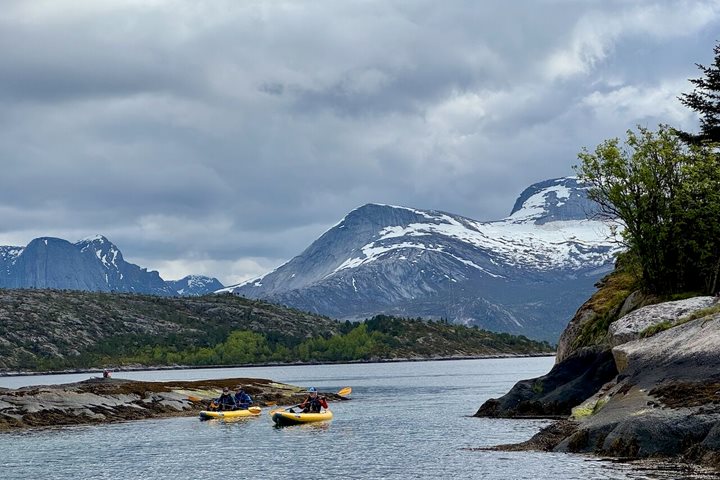We smoothly crept into Bellsund Fjord as the last full day of our journey began. The overcast sky, broken by light areas of cloud and shafts of sunlight offered promise of another wonderful day. National Geographic Explorer’s anchor was lowered, close to our first landing at Ahlstrandhalvoya on the south shore, just inside the entrance to the fjord. An unusually cold wind was blowing from the west, as we left the warmth of the ship to make a landing at the cabin named Bamsebu. Long, medium and short walks were an offer on the large, stony, tundra plain behind the cabin. Grey phalaropes and purple sandpipers were busy feeding at the water’s edge as we made our landing from the Zodiacs. Besides the well-maintained cabin were the signs of a brutal industry past. Hundreds of beluga whales had been slaughtered here many years ago and piled in heaps were their bleached white bones.
Our walk took us out to the headland to the west of the cabin and around a large open bay. We were walking directly into a bracing wind which did not encourage us to stand around. Although we were fast approaching mid-summer there were still very few signs that spring had arrived. The flowering purple saxifrage looked decidedly unhappy as the freshly fallen snow from yesterday melted away from round about. Barnacle geese flew overhead in pairs, calling to each other and were also were seen pecking into the semi-frozen ground searching for something to eat. A few rafts of eider ducks huddled together on the choppy water of the bay.
As our walk took us away from the shore, out onto the open plain, it started to feel more comfortable as we turned our backs to the wind. On seeing a small group of reindeer not far in the distance, we became preoccupied watching these remarkable animals that manage to survive in this hostile environment. Over thousands of years the reindeer in Svalbard have adapted to the severe conditions by becoming smaller, with shorter legs and neck. They do not generally gather in very large groups, the three small females together and four males scattered over a vast area of coastal plain was fairly typical; especially at this time of year when the grazing is so sparse.
The return section of our walk took us higher on the hillside with ever more spectacular views of Bellsund and the surrounding mountains. Occasionally we were forced to cross some boggy areas that threatened to suck the boots from our feet but fortunately never managed to succeed.
During lunch and through the early part of the afternoon National Geographic Explorer headed deeper into the arms of Bellsund, giving us the opportunity to search for bears and other wildlife on the remaining areas of fast ice in Van Keulenfjord and Van Mijenfjord. Many seals were spotted and one polar bear and a walrus that looked like it may have been attacked by a polar bear. These fjords have seen much attention by man in the past. The English company Northern Exploration Company, led by non-other than Frank Wild from Shackleton fame, invested much time and energy prospecting in this area for various minerals but this never amounted to any commercial success. The geology in this area is outstandingly spectacular. The sediments from the Carboniferous and Permian era have been strongly deformed, folded and tilted to an almost vertical attitude in some places. The various layers of sediments may be plainly seen even when cruising in the fjords. A moderately successful mineral exploitation in this area that continues to this day is the coal mine which we could see at the head of the Van Mijenfjord Fjord that is called Sveagruva.
National Geographic Explorer was parked in the fast ice at the head of the fjord for the evening, during the captain’s farewell party and the viewing of the guest slide show.







